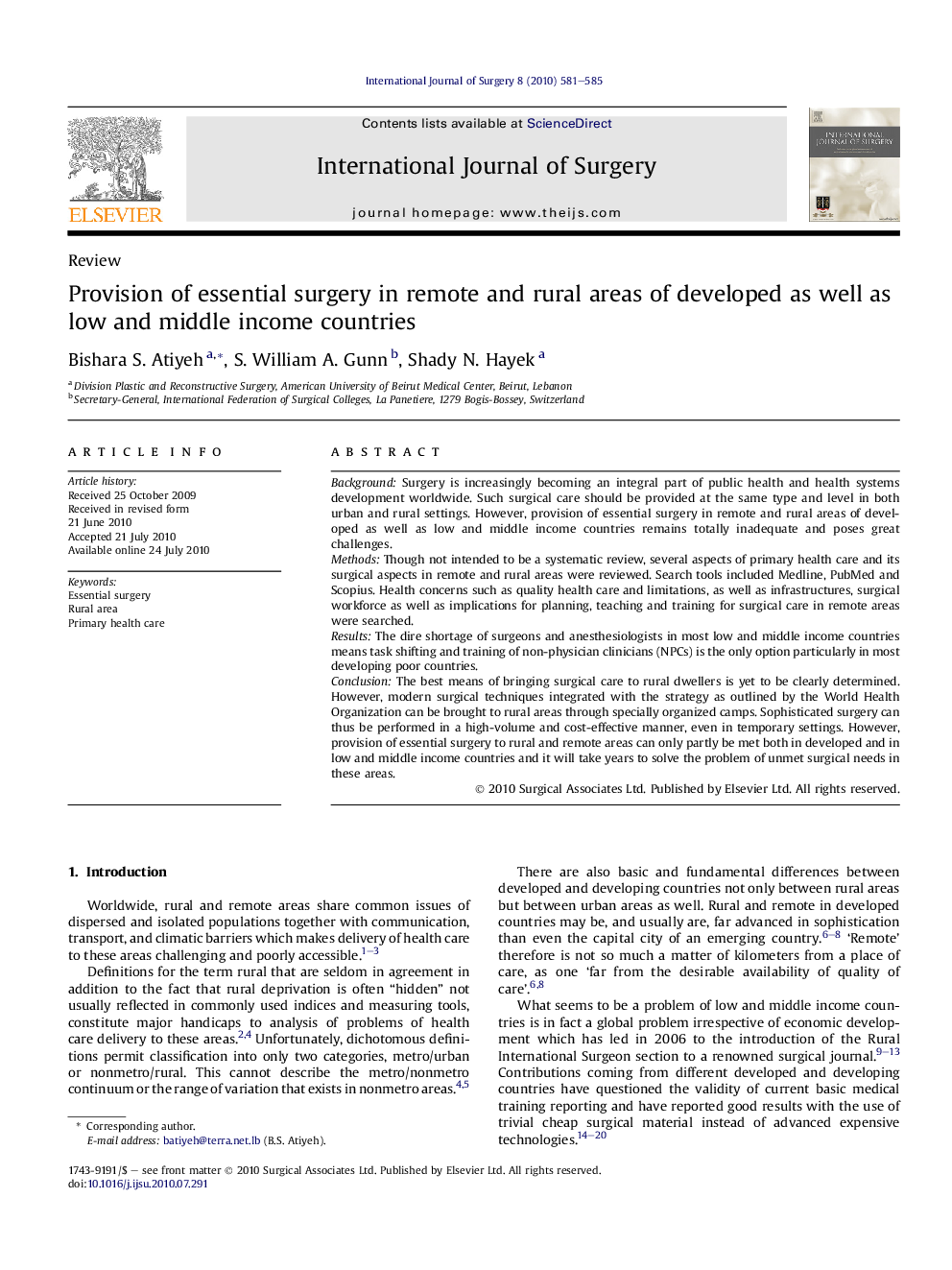| Article ID | Journal | Published Year | Pages | File Type |
|---|---|---|---|---|
| 6252291 | International Journal of Surgery | 2010 | 5 Pages |
BackgroundSurgery is increasingly becoming an integral part of public health and health systems development worldwide. Such surgical care should be provided at the same type and level in both urban and rural settings. However, provision of essential surgery in remote and rural areas of developed as well as low and middle income countries remains totally inadequate and poses great challenges.MethodsThough not intended to be a systematic review, several aspects of primary health care and its surgical aspects in remote and rural areas were reviewed. Search tools included Medline, PubMed and Scopius. Health concerns such as quality health care and limitations, as well as infrastructures, surgical workforce as well as implications for planning, teaching and training for surgical care in remote areas were searched.ResultsThe dire shortage of surgeons and anesthesiologists in most low and middle income countries means task shifting and training of non-physician clinicians (NPCs) is the only option particularly in most developing poor countries.ConclusionThe best means of bringing surgical care to rural dwellers is yet to be clearly determined. However, modern surgical techniques integrated with the strategy as outlined by the World Health Organization can be brought to rural areas through specially organized camps. Sophisticated surgery can thus be performed in a high-volume and cost-effective manner, even in temporary settings. However, provision of essential surgery to rural and remote areas can only partly be met both in developed and in low and middle income countries and it will take years to solve the problem of unmet surgical needs in these areas.
